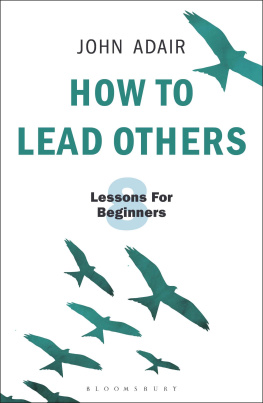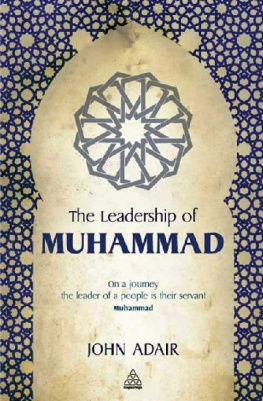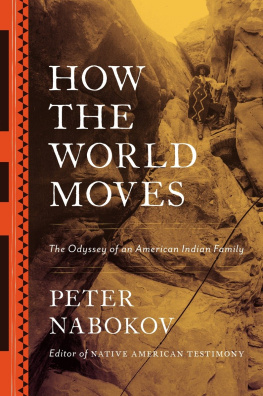
This edition is published by PICKLE PARTNERS PUBLISHINGwww.picklepartnerspublishing.com
To join our mailing list for new titles or for issues with our books picklepublishing@gmail.com
Or on Facebook
Text originally published in 1944 under the same title.
Pickle Partners Publishing 2015, all rights reserved. No part of this publication may be reproduced, stored in a retrieval system or transmitted by any means, electrical, mechanical or otherwise without the written permission of the copyright holder.
Publishers Note
Although in most cases we have retained the Authors original spelling and grammar to authentically reproduce the work of the Author and the original intent of such material, some additional notes and clarifications have been added for the modern readers benefit.
We have also made every effort to include all maps and illustrations of the original edition the limitations of formatting do not allow of including larger maps, we will upload as many of these maps as possible.
THE NAVAJO AND PUEBLO SILVERSMITHS
BY
JOHN ADAIR
Table of Contents
Contents
Table of Contents
REQUEST FROM THE PUBLISHER
INTRODUCTION
Probably no native American handicrafts are more widely admired than Navajo weaving and Navajo and Pueblo silver work. This book contains the first full and authoritative account of the Indian silver jewelry fashioned in the Southwest by the Navajo and the Zuni, Hopi, and other Pueblo peoples. It is written by John Adair, a trained ethnologist who has become a recognized expert on this craft.
A volume conspicuously pleasing in its format and so strikingly handsome in its profuse illustrations as to rivet your attention once it chances to fall open. With the care of a meticulous and thorough scholar, the author has told the story of his several years investigation of jewelry making among the Southwestern Indians. So richly decorative are the plates he uses for his numerous illustrations showing the jewelry itself, the Indians working at it and the Indians wearing itthat the conscientious narrative is surrounded by an atmosphere of genuinely exciting visual experience.The Dallas Times Herald.
To prepare his book, Mr. Adair made an exhaustive examination of the principal museum collections of Navajo and Pueblo silver work, both early and modern, in Santa Fe, Colorado Springs, Chicago, New York, and Philadelphia. He visited trading posts in the Indian country and examined and photographed silver on the pawn racks and in important private collections. He lived for a time among the Navajo, watched them make their jewelry, and actually learned to work silver himself in the hogan of one of the leading artisans, Tom Burnsides. Many of the photographs he made at the time are used as illustrations in this book. He spent months among the Indians in New Mexico and Arizona and became personally acquainted with many of their silversmiths (he provides in this volume lists of Navajo and Pueblo craftsmen). Later, as field worker for the Indian Arts and Crafts Board, he studied the economics of Navajo and Pueblo silversmithing; and still later he became manager of the Navajo Arts and Crafts Guild, a tribal enterprise.
The Navajo and Pueblo Silversmiths provides a full history of the craft and the actual names and localities of the pioneer craftsmen who introduced the art of the silversmith to their people. Despite its present high stage of development, with its many subtle and often exquisite designs, the art of working silver is not an ancient one among the Navajo and Pueblo Indians. There are men still living today who remember the very first silversmiths.
Mr. Adair gives full details, as he observed them, of the methods and techniques of manufacture over a primitive forge with homemade tools. He tells both of the fine pieces made for trade among the Indians themselves and of the newer, cheaper types of jewelry produced for sale to tourists. He discusses standards and qualities of Indian silver and describes the work of the Indian schools in helping preserve traditional design in the fine silver of today. His excellent photographs of some of the most notable pieces, old and new, provide examples for evaluation. This volume, therefore, will serve the layman, the ethnologist, and the dealer alike as a guide to proper values in Indian silver jewelry, and will provide the basis for authoritative knowledge and appreciation of a highly skilled creative art.
JOHN ADAIR, at this writing a sergeant in the United States Army Air Forces, and formerly manager of the Navajo Arts and Crafts Guild, is a graduate of the University of Wisconsin. He secured his training in anthropology at the University of Michigan and at Columbia University.
The most interesting thing about Navajo and Pueblo silver, he says, is not the esthetic object separated from its social setting and viewed abstractly in a museum case, nor yet the making of this object, but the sociological significance of the art form in Navajo and Pueblo culture. This whole aspect of the craft has hitherto been neglected, as it has been in the studies made of the arts of many other primitive peoples.
This book is number twenty-five in the Civilization of the American Indian Series.
DEDICATION
For Ralph Linton
who taught me to look at art
as an integral part of
primitive culture
PREFACE
THIS BOOK is the result of investigations carried out over a period of several years. The principal field work was done during a six-month period in the latter part of 1938. Work had been initiated the previous summer when, in early September, I undertook a preliminary study of Navajo silver technology. Before continuing research the next spring, I studied the collections of Navajo and Pueblo silver in New York, Philadelphia, and Chicago, and, on the way to the Navajo country, the collections of the Denver Art Museum, the Taylor Museum in Colorado Springs, and, finally, the most important and much the largest collection of all, that belonging to the Laboratory of Anthropology in Santa F. The text was finished in the spring of 1940; material collected subsequently will be found in Appendices II and IV.
The short study of technology and the museum research impressed upon me a fact which I had suspected before the inauguration of the whole project. The most interesting thing about Navajo and Pueblo silver is not the aesthetic object separated from its social setting and viewed abstractly in a museum case, nor yet the making of this object, but the sociological significance of the art form in Navajo and Pueblo culture. This whole aspect of the craft has hitherto been neglected, as it has been in the studies made of the arts of many other primitive peoples.
In the pages which follow I have attempted to depict the importance of silversmithing in Navajo and Pueblo culture. The book falls into two distinct parts. The first presents the study of Navajo silver. The second gives an examination of the art of silver-making at the pueblo of Zui, which is the only pueblo where the craft is extensively practiced, concluding with a short survey, mainly of a historical nature, of the art in the other pueblos.
The Navajo and Zui sections are similar in outline, and each of them begins with a reconstruction of the history of the craft. I acquired my historical information in two ways: first, by questioning old residents, oftentimes men who in their younger days were silversmiths themselves, who have seen the growth of the art during their own lifetime; and second, by the use of written materials, both in historical studies and in random mentions in the reports of nineteenth-century ethnographers. I have placed in relief against this historical background a study of the craft as it exists at the present time. The process of making silver jewelry by various representative craftsmen is described. Following that, in both the Navajo and the Zui sections I have presented the social aspects of the art. How a silversmith learns the craft, to whom he sells his work, the aesthetic standards of the ethnic group, and other related matters are included. Finally, I have given an account of the economics of silversmithing, which is necessarily linked closely with the social functions of the craft.
















